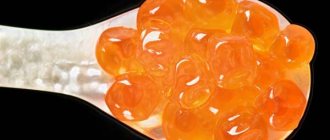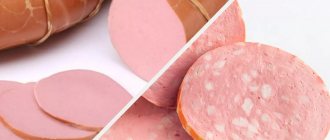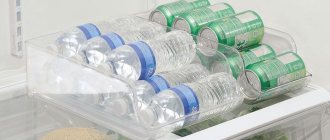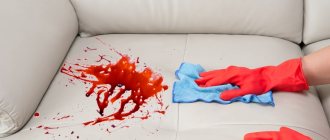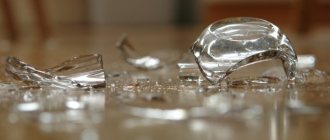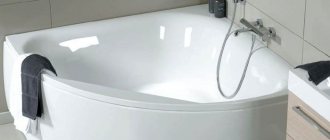How to wash plastic, tips for caring for different types of material
There are two main types of plastic.
- Laminated - covered with a protective film, giving it gloss.
- Non-laminated - has a matte surface.
Material not covered with a protective film is more difficult to maintain. There are micropores on its surface; dust and dirt become clogged with them, requiring thorough cleaning. Lamination makes the surface absolutely smooth and much easier to clean.
Before you start cleaning plastic, you need to familiarize yourself with some rules.
- To care for plastic surfaces, use only soft sponges and wipes. Abrasive brushes can severely scratch the product.
- Detergents should also not contain hard abrasive particles.
- Plastic is afraid of acidic liquids. When choosing household chemicals for cleaning, make sure that they are suitable for PVC.
- When exposed to high temperatures, plastic expands and becomes flexible. To prevent it from deforming, you need to wash it with warm water (no higher than 40 degrees).
- All detergents must be thoroughly washed off the surface of the plastic.
- After cleaning, the plastic surface may lose its shine. A special polish will return its gloss.
General recommendations for using plastic utensils
- Any plastic utensils, even the highest quality, are intended for short-term contact with food.
- It is not recommended to use plastic containers for storing fat-containing products such as butter, margarine, animal fats, and mayonnaise.
- It is prohibited to use various plastic containers for pickling and fermenting vegetables, fruits and mushrooms.
- Damaged containers should not be used for eating or storing food.
- Do not use plastic that is not intended for this purpose for hot food or for freezing.
- Do not store alcohol-containing liquids in plastic containers. Alcohol is a strong solvent and can release harmful substances from plastic.
- Do not reuse disposable tableware. This advice also applies to plastic bottles.
Good quality heat-resistant cookware can be washed in the dishwasher along with other kitchen utensils. To prevent dishes from “walking” around the machine, secure them with special clamps. Then the dishes will definitely be washed well and will not break.
You can wash plastic dishes by hand using liquid dishwashing detergent or laundry soap. It is not recommended to use bulk substances that have small abrasive particles. This detergent can damage the top layer of plastic. If there is a need to remove heavy dirt from the dishes, you can use baking soda after lightly wetting it with water. It is recommended to rinse dishes with cool water.
Sometimes a closed plastic container develops an unpleasant odor. To get rid of it, put a piece of cut lemon or zest in the container. Close the container and leave for a while - the unpleasant smell will disappear.
We invite you to read: Tips and rules for caring for cast iron cookware, aluminum pottery and other kitchen utensils
You can also use baking soda to eliminate odor. Moisten the baking soda and rub the surfaces of the container; after a few hours, wash the container.
Activated carbon is a good odor sorbent. Place a few tablets in a container, close it, leave it for ten to twelve hours and you can use the container for its intended purpose.
How and with what to quickly wash plastic surfaces
Let's look at the most effective methods on how you can clean plastic with your own hands and without much effort.
How to wash plastic
Household chemicals for cleaning plastic
Ready-made store-bought products containing chlorine will cope perfectly with stains on plastic surfaces. Bleach liquids are ideal for cleaning white plastic.
On sale you can find special detergents labeled “for cleaning plastic.” You can remove grease stains and other food stains using dishwashing gel.
The following products have proven to be the best for caring for plastic materials.
- Sanita
- Cif-gel
- Muscle
- Pemolux
Almost all of these products cope well with various types of contaminants. Don't forget that you need to wear gloves when handling aggressive chemical liquids. Allergy sufferers are advised to wear respiratory masks.
Traditional methods of washing plastic
The recipes that came to us from the people are distinguished by their accessibility, effectiveness and maximum safety. So, let's look at how to wash plastic using available products.
Anti-pollution laundry soap
Ordinary cheap laundry soap is a very effective detergent, bleaching and disinfectant. It perfectly removes grease, stubborn stains, and other contaminants.
You can simply wet the sponge in water, rub it with soap and clean the surface of the plastic, then rinse it with clean water. For complex stains, it is recommended to apply a soap solution for 15-20 minutes.
- To do this, grate the soap on a fine grater and dissolve it in warm water to form a gel-like substance.
- Then it is applied to the surface. After time, the plastic is cleaned with a sponge and washed.
Hydrogen peroxide for yellowness
The method is well suited for cleaning white plastic and removing yellow discoloration, as well as for removing old stains from PVC.
Liquid peroxide is applied to the surface of the plastic with a sponge or cloth and left for 10 minutes, after which the plastic is cleaned and washed. To enhance the effect, you can dissolve a little grated laundry soap in peroxide.
Traditional methods of washing plastic
Baking soda for stains
Sodium bicarbonate is a simple but very effective cleaning agent for various surfaces. Soda is diluted with warm water to a paste.
For severe contamination, apply the paste to the surface and leave for 15-20 minutes. If the plastic does not require deep cleaning, then dip a sponge into the mixture and remove dirt with it.
Ammonia against fat
Ammonia allows you to quickly remove grease and dust from plastic and restore shine to the product. You can quickly clean window frames and PVC panels with ammonia.
- It is diluted in warm water at a rate of 1:10.
- A napkin or sponge is moistened in the liquid and rubbed onto the surface.
- Finally, be sure to rinse the plastic with clean water.
These were the most effective methods than washing plastic in the house. It is not forgotten that prevention will free you from a labor-intensive process. Wipe plastic products with soapy water once a week. Then difficult-to-remove stains will not accumulate on them. Unfortunately, white plastic will still turn yellow over time and will need to be bleached periodically.
Source
How to clean such contamination?
The first thing that is important not to forget is that you can clean the silicone mold after it has completely cooled.
- Take a container that will completely fit your silicone mold. Pour hot water and add citric acid. Approximate proportion: for three liters of water – a tablespoon of citric acid. Immerse the mold in the resulting solution and leave for half an hour. After you take out the mold, it can easily be washed off from burnt dough, berry juice and other stains.
- No citric acid - no problem, soda and vinegar are always available in the house. Add vinegar and soda to warm water. As soon as the baking soda reacts chemically with the vinegar and starts to foam, dip the dirty molds into the mixture. After fifteen to twenty minutes, the molds can be easily washed.
- If the stains on silicone utensils are old, you can boil them for five to ten minutes in water with the addition of dishwashing detergent and soda. After boiling, let the water and the dishes in it cool for about twenty minutes, then the dishes can be rinsed.
Silicone molds are easy to turn out, so cleaning the corners with a soft brush is quite easy.
Do not use abrasive substances or hard brushes to wash silicone utensils. If the surface is damaged, you will not be able to use this form, and it will not be possible to restore it.
If the color of the form changes over time, you just need to accept it, because the color does not affect the taste of the food in any way. But if this bothers you, buy dark-colored forms right away.
We suggest you read: How to clean glass in an aquarium
Now you can decide for what purposes you should use plastic tableware, and how to care for it in order to preserve the properties of the material.
Why plastic turns yellow over time and how to bleach it
There are many reasons why plastic turns yellowish. Let's talk about the most common ones.
- If this material does not contain special substances that prevent exposure to the sun, then ultraviolet radiation partially destroys it. To avoid this process, benzophenone and benzotriazole are added to the material during production.
- Plastic also turns yellow when exposed to oxygen. But this takes a lot of time.
- Sudden changes in temperature. For example, if the item is in the kitchen.
- Yellowing due to washing with strong chemical solutions that corrode the surface.
- Recycling of material. Plastic made from industrial waste may be of poor quality. For long service life, when melting them, you need to add special products.
- Fatty plaque.
- Violations of the rules for care and use of the product. For example, frequent smoking in the room where the item is placed, or an open fire nearby. Even with ventilation and exhaust, the plastic will still turn yellow.
Safe products and tools
To remove plaque from plastic, avoid using sharp objects, hard-bristled brushes, or metal scrapers. Tools scratch the surface and cause cracks to form. They are a source of dust that is difficult to clean. In addition, they cause yellowing and darkening of plastic products.
It is prohibited to use aggressive agents that contain:
- formic acid;
- formaldehyde;
- acetone or other solvents.
Acidic cleaning products are not suitable for removing limescale deposits: they corrode the plastic.
Safe chemistry: how to choose the right one
PolyBas is a universal product and can also be used for cleaning floors
Aftercare of products
To ensure that caring for plastic products helps reduce limescale deposits, follow the following recommendations:
- use filters to soften water and get rid of unnecessary impurities;
- monitor the serviceability of plumbing equipment;
- After using the shower stall, it is mandatory to wipe the walls and doors with special towels;
- avoid abrasives, which lead to damage to the appearance of the product and the accumulation of dirt in scratches;
- After using a soap solution, it is advisable to treat the plastic coating with polish: the film formed is protection against microcracks.
Maintain cleanliness and remove limescale using improvised means, as well as specially designed household chemicals. Regular care of plastic will avoid problems in the form of lime deposits and will extend the service life of products.
Shower cabin care: how to clean your shower cabin from plaque
Have you installed a shower stall in the bathroom, but after a week its walls have become cloudy? Has your new shower enclosure lost its spectacular appearance and become covered in unpleasant stains? Has the tray stopped shining, has a matte soapy coating appeared on it? All these phenomena are the result of the active use of plumbing equipment. And the point here is not only that during water procedures we use soap, gels, washing foams and washcloths, which remove small particles of skin from the body, which cause the appearance of spots and stains on the walls.
Tap water, in which salts and minerals are dissolved, plays an equally important role in the occurrence of pollution; Often tap water also contains mechanical particles that are not visible to the eye, but settle on all surfaces and form a coating. If you do not promptly get rid of such contaminants, then the plumbing fixtures will very soon cease to please you with their appearance, but what is more important is that salt deposits lead to accelerated wear and tear of the equipment, which means there is an increased likelihood that in just a few months you will have to think about repairing the shower cabin and even replacing its parts.
However, all these troubles are very easy to avoid; you just need to regularly care for the shower stall. So, how to clean your shower stall from plaque?
Where does care begin?
To begin with, it must be said that daily cleaning of the walls and tray of the cabin will protect you from the appearance of severe contamination. This procedure will take no more than five minutes and will allow you to avoid lengthy cleaning, which will certainly be needed in advanced cases. After each bath, just rinse the walls and tray and then wipe dry with a cloth. This way you will remove drops that, when dried, will form stains and plaque.
Have you made sure that the doors and walls of the cabin are transparent? Now pay attention to the pallet. Move your hand in several places; if you feel smooth and do not feel that there are rough places on the surface, then simply rinse the tray with water and also wipe with a cloth. If you find places with dirt, remove them with a soft brush and also rinse. And do not forget that after washing the cabin should be left open.
This will ensure faster drying and prevent mold from occurring.
Special care for the shower cabin
It is recommended to carry out special care to get rid of limescale in the shower stall a couple of times a month. If you thoroughly clean all parts every evening, you can do a thorough cleaning every 3-4 weeks. First of all, remember that you should not have the following devices and tools in your arsenal:
- hard sponges;
- metal brushes;
- scrapers with sharp edges;
- abrasive powders;
- aggressive cleaning compounds.
The use of all these items and products can cause irreparable damage to the equipment, ranging from small and large scratches to cracks and chips. To properly clean all parts of the shower stall, you should have rags, soft sponges and synthetic brushes, special cleaning products and a rubber or polyurethane scraper. These assistants will allow you to deal with any contamination, but will not damage even the most delicate parts of the cabin. It is recommended to start cleaning the cabin from the walls and doors.
Cleaning the walls of the shower stall
Regardless of whether the cabin is equipped with plastic walls or you choose a glass model, you will very quickly find that the walls become cloudy. This is especially noticeable if you have a model made of transparent material installed; on matte fences, the appearance of plaque is less noticeable. Of course, this defect spoils the appearance of the equipment, and it is completely unpleasant to carry out water procedures in such a cabin. Please note that cleaning glass and plastic walls differs.
Cleaning glass walls and doors
Does your cabin have glass walls and doors? Then your choice is glass cleaning products in the form of sprays. Spray the mixture onto the surface, wait a few minutes for the coating to dissolve, and remove dirt with a damp sponge. If you can’t remove the stain with a sponge, then use a brush or scraper - such tools can handle even difficult stains.
If you have not cleaned for a long time, persistent stains may form on the glass of the shower cabin, which are difficult to remove mechanically. To get rid of them, you can use a proven folk remedy - a solution of vinegar or lemon juice. Apply the liquid to the stain, wait and remove marks with a brush. These home remedies will make glass completely transparent. After treating with ready-made or homemade compositions, be sure to rinse the walls with warm water and wipe them dry.
Cleaning plastic walls and doors
Does your cabin have plastic walls and doors? Then, before you clean the shower stall from limescale, prepare special cleaning compounds for products made of polymers. You can find the product in the form of a gel, cream or spray - all of them do a good job of removing stains from plastic. Remember that for maximum effectiveness, after applying the product to the surface, you should wait until it acts on the plaque and only then begin to remove it. To clean plastic, use sponges and rubber scrapers that will not scratch the surface.
How to clean plastic
When choosing a product that can be used to properly clean plastic, you should take into account the nature of the contamination. Let's figure out how you can wash plastic products from various stains.
From yellow plaque and fat
Most often you need to clean plastic from grease in the kitchen. This is due to the fact that during cooking, splashes fly from the stove in all directions, which is why all the kitchen furniture and windows are covered with a yellowish coating. Here's a list of the easiest ways to remove grease from plastic surfaces:
- Peroxide based solution. To prepare it, you will need to mix three hundred milliliters of clean water and one hundred milliliters of the active substance. This liquid is perfect for cleaning white plastic from plaque.
- Solid soap. To prepare the cleaning product, you need to dissolve the shavings obtained from rubbing a bar of soap on a coarse grater in a liter of warm water.
- Ammonia. To carry out the hygienic procedure, you need to dissolve the caustic substance in water in a ratio of one to four. The resulting liquid is well suited for combating old fat.
Regardless of which cleaning agent the housewife chose, the method of application is the same. To effectively wash plastic from greasy deposits and yellowness, you must first apply the selected solution to the stained surface with a soft sponge and vigorously rub it. After two to three minutes, remove any remaining dirt with plain water.
From soot and dirt
Often, housewives are faced with situations where they need to wash hard-to-remove stains on plastic, such as dirt and soot. This is most difficult to do when it comes to white surfaces. However, there are several proven life hacks that can easily cope with the task:
- If the dirt is firmly ingrained into the plastic window sill, you can wash it off using vodka or medical alcohol. To do this, just moisten a clean cloth with alcohol-containing liquid and vigorously rub the surface to be cleaned.
- Dirty deposits can be easily removed using a melamine sponge, which actively dissolves even stubborn stains. You can buy it at a hardware store. To clean the plastic, you will need to moisten the sponge in water, then wring it out and treat the stained areas.
- To remove soot from plastic, you should use a solvent, such as gasoline or acetone. Regular nail polish remover will also work. The method of application is simple - first you need to moisten a soft sponge with solvent and carefully wipe off the dark deposits.
Important! When working with active solvents that have an unpleasant, pungent odor, it is necessary to thoroughly ventilate the room in which the hygienic procedure is being carried out. It would also be a good idea to protect your skin with rubber gloves.
From tape and glue
When there is a sticky coating on the plastic, over time it becomes covered with dust and darkens. Next we will look at how to get rid of untidy gray spots:
- To clean the white window sill from remaining tape, you can rub the sticky areas with a cotton swab dipped in sunflower oil.
- If you need to remove old marks from a sticker or label, it is best to use special cleaners. For example: Liqui Moly, KUDO, KANGAROO. Also, with these professional products it is easy to clean plastic from glue residues.
- When you need to get rid of traces of superglue, you can try washing them off with kerosene. Then clean the surfaces to be washed from chemicals with plain water.
Features of eliminating damaged areas on a plastic product
The color of the material and structure will help you choose a suitable product for masking shallow damage on a plastic product.
On transparent
Hard rags and sponges, time, ultraviolet rays, household chemicals with an aggressive composition are an incomplete list of reasons why transparent plastic loses its appearance.
Traces of mechanical damage can be removed from it only by polishing. Suitable for this:
- disc scratch remover;
- glass cleaning liquid;
- polish for jewelry.
You can use compounds intended for wooden surfaces if you mix them with Vaseline. The algorithm of actions for all methods is the same:
- Apply the product to a microfiber cloth.
- Treat the damaged surface.
- Polish thoroughly.
It is believed that transparent plastic is more susceptible to damage due to mechanical stress. In fact, scratches do not appear on it more often than on colored or matte ones, but they are more noticeable.
Black
Scratches on black plastic can be masked by painting; damaged areas are always visible due to the lighter color.
Ideal for eliminating deep and small scratches, a special corrector pencil is suitable; it fills the resulting voids and makes traces of mechanical damage less noticeable.
Mode of application:
- Clean the surface thoroughly using detergent and a cloth.
- Wait until completely dry.
- Apply the contents of the pencil to the damage.
- Polish the surface using a wax-based product.
It is necessary to choose the correct shade of the filler so that it matches the main color as closely as possible.
White
Traces of mechanical damage on white plastic are less noticeable, but dirt and dust accumulate faster in the voids of scratches, so you need to get rid of them immediately.
You can replace the damaged part, but advice from manufacturers will help you avoid unplanned expenses. All irregularities from white plastic can be removed with 600-grit sandpaper.
If the surface is glossy, additional treatment will be required to add shine with an industrial product, for example, COSMOFEN 10. The product is a solvent, you must work with it with gloves and follow safety precautions.
Matt
Damage on matte plastic is less noticeable; often for white surfaces, sanding scratches and cracks with sandpaper is sufficient.
For multi-colored materials use:
- sponges with shoe polish,
- proofreaders,
- markers,
- silicone,
- and even powdered coal.
Tsvetnoy
Mechanical damage to colored plastic cannot always be masked using polish. To make the scratch truly invisible, you need to use a wax pencil, which is easy to use.
It is enough to clean and degrease the surface and trace the damage with a colored pencil several times. The wax will fill the voids. With the correct selection of shade, the treated area will not differ from the main color.
It is better to purchase the product in a special store (hardware or automotive) to avoid cheap counterfeits.
Traditional methods of combating plaque
For followers of folk remedies, there are also a large number of recipes. They have proven themselves to be excellent, especially since they cost pennies.
Ammonia and citric acid
Ammonia should only be used in ventilated areas, and using lemon juice is expensive. You can replace it with a solution of citric acid. Ratio: 200 g water – 20 g acid. 15-20 minutes will be enough to remove the lime.
If you constantly monitor the condition of plastic surfaces, wash them regularly and try to wipe them dry, the problem of lime deposits will disappear by itself.
Vinegar
Ordinary vinegar has long been considered the main assistant in removing limescale on plastic. Vinegar diluted with water will do a great job of removing plaque.
It is diluted in proportions of 1:3, with more water accordingly. Wet the contaminated surface or spray it, leave it for a while, then walk over the surface with a washcloth and rinse with plenty of water.
Ammonia and lemon juice are alternatives to vinegar. They also cope well with calcium carbonate, but there are some minor nuances.
Hydrogen peroxide for yellowness
The method is well suited for cleaning white plastic and removing yellow discoloration, as well as for removing old stains from PVC.
Liquid peroxide is applied to the surface of the plastic with a sponge or cloth and left for 10 minutes, after which the plastic is cleaned and washed. To enhance the effect, you can dissolve a little grated laundry soap in peroxide.
Traditional methods of washing plastic
Anti-pollution laundry soap
Ordinary cheap laundry soap is a very effective detergent, bleaching and disinfectant. It perfectly removes grease, stubborn stains, and other contaminants.
You can simply wet the sponge in water, rub it with soap and clean the surface of the plastic, then rinse it with clean water. For complex stains, it is recommended to apply a soap solution for 15-20 minutes.
- To do this, grate the soap on a fine grater and dissolve it in warm water to form a gel-like substance.
- Then it is applied to the surface. After time, the plastic is cleaned with a sponge and washed.
Note: marks from a pen, marker, or pencil on a plastic surface can be easily removed with alcohol. Soak a cotton swab or piece of soft cloth in it and remove the dirt.
Baking soda for stains
Sodium bicarbonate is a simple but very effective cleaning agent for various surfaces. Soda is diluted with warm water to a paste.
For severe contamination, apply the paste to the surface and leave for 15-20 minutes. If the plastic does not require deep cleaning, then dip a sponge into the mixture and remove dirt with it.
Snow-white windows using improvised means
In every home there are items designed to help clean the surface of the profile. You just need to spend a little time and effort, and the windows will become like new again.
Laundry soap
This method is perhaps the most harmless for both the window surface and the housewife. You need to act in the following sequence:
- Grate half a bar of laundry soap.
- Pour a glass of boiling water over the resulting mixture, mix thoroughly and leave until cool.
- Apply the resulting slurry to the previously cleaned profile.
- Leave for half an hour.
- Then rinse off the remaining soap with clean water and wipe dry with a rag.
There will be no trace of grease, soot or tobacco smoke left.
Dish detergent
A greasy stain left on a kitchen window can be removed with any dishwashing detergent:
- Apply a few drops of detergent to the sponge.
- Rub the stain thoroughly.
- Rinse off with warm water.
- Wipe with a dry cloth.
Washing powder with soda
Experienced housewives know how to clean the window sill of a plastic window from yellowness. To do this, prepare a soda solution of washing powder:
- Take 0.5 liters of water, adding 1 tbsp. with a pile of washing powder for whites and baking soda.
- Chop the mixture thoroughly and apply it to the windowsill, moistening a cloth in it.
- Do this in the evening, and in the morning, rinse the solution from the windowsill with plain water and wipe dry.
A similar recipe will help residents of the first floors to clean windows and window sills from the outside.
Hydrogen peroxide
You can try to bleach structures that have turned yellow over time with a pharmaceutical solution of hydrogen peroxide:
- Pour a little product onto the sponge.
- Apply to the damaged area.
- Leave for 2-3 hours for it to take effect.
- Rinse off any remaining peroxide with water and wipe dry with a soft cloth.
You may need to do this procedure two, three or even five times to achieve whitening.
You can only take 3% product. Technical hydrogen peroxide will irreversibly damage windows and window sills.
Vinegar essence
Regular vinegar will not do the job of whitening plastic structures. And 70% vinegar essence is quite capable of this:
- Soak a napkin in the essence.
- Wipe problem areas.
- Wash the surface to be treated with water and detergent.
To avoid problems, work with the product wearing thick rubber gloves. And after the procedure it is necessary to ventilate the room.
Three-component mixture
A bleaching agent made from soap, soda and vinegar has proven effective:
- Mix liquid soap, baking soda and vinegar in equal quantities.
- Distribute the resulting slurry evenly over the contaminated areas.
- Leave for 6 hours.
- Rub off and rinse with water.
Tooth powder with chalk
Profiles in the initial stage of contamination will be affected by this mixture:
- Crush the chalk, add the same amount of tooth powder, mix.
- Moisten with water to form a thick paste.
- Distribute a thin layer over all dirty areas.
- Wait until the water evaporates.
- Use a dry cloth to remove any remaining powder.
If you notice that the spots have faded but have not disappeared, repeat the above procedure.
Hair lightening agent
Women who regularly lighten their hair will not have to spend money on additional products. You can use the 12% oxidizing agent present in the hair dye box. You just need to drop 5 drops of ammonia into it.
The whitening effect will be noticeable immediately. But if one time is not enough for the yellowness to completely disappear, then it will be possible to repeat it after a while.
Citric acid with chlorine
A mixture of powdered bleach and citric acid is a reliable means for washing plastic surfaces. Need to:
- Mix the ingredients.
- Add water until you get a thick paste.
- Apply it to yellowed areas, leaving for 30 minutes.
- Wipe off any remaining composition with a rag.
The ingredients are aggressive, so you need to wear gloves.
Acetone
Not every PVC panel can withstand acetone treatment. Therefore, first you should test it on a small piece. The procedure is simple:
- Soak a cloth in solvent.
- Apply to dirt and wipe.
- Immediately after treatment, rinse with detergent.
You can use nail polish remover. It is less aggressive, but the effect will be weaker. Do not forget to use protective equipment when working.
Alcohol
The procedure is easy to use:
- Soak a dry cloth in alcohol.
- Treat all yellowed areas.
- Wash off any remaining alcohol with clean water.
Like acetone, alcohol is only suitable for processing dense plastic. So before use, you should do a test in an inconspicuous place.
Alcohol can be ethyl, methyl or any other.
Household chemicals
How to clean the window sill of a plastic window? Experienced housewives use universal products.
Among the variety of products, the following can be distinguished:
- Mr. Proper. A universal dirt killer in powder or thick gel form. The liquid product contains abrasive particles. It copes well with various contaminants, but afterward the surface must be thoroughly rinsed. Otherwise it will be a dust magnet.
- Cillit Bang. With a convenient and economical sprayer, which greatly facilitates the work. Quickly and effectively deals with various contaminants, including grease deposits on the kitchen window sill. But after work, the room needs to be checked, as the solution has a strong and unpleasant odor.
- Comet. This product is sold both in powder and gel form. And for cleaning window sills, the second option is suitable. Its main purpose is to combat greasy stains, so it will be indispensable for a kitchen window.
- Domestos. Detergent and bleaching agent. Works well on both grease and rust stains.
- "Pemolux". Soft abrasive powder. Gentle, but not very effective. Belongs to the budget category of goods.
- Mr. Muscle. Thick cream with cleaning and whitening effect. Shows good results when removing various contaminants.
- Froch. A line of substances for removing light stains. Suitable for use in rooms with small children, allergy sufferers and asthmatics.
Deposits in the bathroom
Frequent cleaning using surfactant-based detergents helps get rid of plaque and prevent the formation of a thick layer of lime. When choosing such a substance, you need to carefully read the label. It should contain a mark indicating the presence of anti-corrosion inhibitors in the composition. Popular effective detergents: Domestos, Sanfor, Mr. Muscle, Cif, Cillit Bang.
It is advisable to choose a cream or paste, as they have a gentle effect on the surface. Nitric and sulfuric acids destroy the surface of plumbing fixtures; products containing them must be put aside.
Care Tips:
- Yellow plaque on the toilet can be removed with vinegar. The contaminated areas are watered with it and left to act overnight; the next morning the toilet is washed with plenty of water.
- You can remove water stone in a shower stall using a soda paste (soda and water). It is applied to the stain and, after 10 minutes, washed off with a stream of water.
- Dirt on shower heads can be washed off with citric acid. The removed nozzle is immersed in the solution (2 tablespoons per 250 ml of water) and left for two hours. After time, the surface is treated with a sponge and water.
- Wrap a cloth soaked in vinegar over the tap and leave for one hour. During this time, the water stone has time to dissolve. All you have to do is wipe it with a sponge and rinse with water.
- You can remove limescale from glass using vinegar. The surface of the shower stall is sprayed with it and then thoroughly washed with water.
Enameled, cast iron and steel bathtub
The powder is used once a week to remove lime from enameled and cast iron surfaces. To clean a metal bath, gel-based products are used. They are evenly distributed over the surface and carefully remove accumulated plaque.
To combat deposits, prepare a mixture of 100 ml of vinegar and 2 tbsp. l. salt. It is heated in a microwave oven to 70 degrees and applied to dirty areas with a rag. After 30 minutes, the remaining plaque is wiped off with a damp cloth.
Instead of salt, you can use soda. Pre-contamination is wiped with a rag soaked in a soap solution, then sprinkled with soda and sprayed with vinegar from a spray bottle. The reagents destroy lime within half an hour. After this time, the surface is washed with water. If contamination remains, the procedure can be repeated. This mixture is also used to remove lime from the floor.
A mixture of 100 ml of ammonia and 50 ml of hydrogen peroxide has a good effect. The second component must be slowly poured into a container with ammonia. Lime deposits are wiped with this solution and washed off with water after half an hour.
Acrylic surface
To prevent the formation of limescale, the bathtub should be wiped with a microfiber cloth after use. Persistent stains are washed off using liquid products that do not contain acetone, chlorine, ammonia, phosphoric and formic acid. You should also not use ammonia, washing powder or abrasive products for plumbing.
Instructions for using citric acid:
- Pour half a packet of acid into a glass of water and stir until completely dissolved.
- The sponge is soaked in the solution, the bath is wiped and left to act for 15 minutes.
- Then you need to go over the dirt again and rinse the surface with clean water.
You can install a filter to soften the water. Its use helps reduce the calcium carbonate content in water and, as a result, protect plumbing from contamination.
What products should not be used to clean a plastic kitchen?
- Using abrasives and hard sponges. They erase the top layer of the product, and the surface becomes not as smooth as before. As a result, it becomes more difficult to clean.
- Chlorine-containing products. Such solutions can discolor the surface, and the kitchen will look faded.
- Polishes containing wax. As a result of treatment with such means, the plastic becomes sticky and collects all the dust and dirt.
- Alcohol-containing products. The material from which the facade is made may fade and lose its former color.
- 5. Means for washing kitchen stoves and plumbing fixtures. They contain aggressive components that can leave indelible stains and cloudiness on the facade.
The most effective home remedies to remove limescale
Mineral salts contained in tap water cause the formation of dense limescale deposits on all bathroom surfaces. Today there are many drugs designed specifically for its removal, but many housewives prefer to use home remedies the old fashioned way.
If you choose the right ingredients, you don’t have to worry about maintaining the smoothness and uniformity of the processed material. Ready-made compositions based on aggressive chemical reagents, although they cause less trouble, can scratch glass or ceramic products, stain faucets, remove the protective enamel covering the faucet, and corrode plastic.
How to quickly remove limescale from faucets and showers?
When processing taps, mixers and shower heads, you need to act carefully. First, to remove plaque, you should try the most gentle remedy - hot water. A stream of boiling water or hot steam must be directed at the selected element. It is better to completely unscrew the tap and shower head and place it in a container with hot water for a while; it is not recommended to add even the most gentle detergent. After a few minutes, the lime layer will begin to soften and can be easily washed by hand.
Tip: It is strictly forbidden to use a sink or bathtub as a soaking container. Such hot water can negatively affect the condition of the coating, especially if the element is made of acrylic.
If you cannot clean the nozzle, faucet or faucet using high temperatures, you will have to use acetic acid. We start with a weak solution of white vinegar, and if necessary, gradually increase the concentration of the composition. You simply need to apply the resulting product to the mixer or faucet, generously moistening those areas where there is a denser layer of plaque. We wait half an hour, update the lineup and wait the same amount. Then use a soft sponge to remove the limescale build-up. It is better to soak removable elements, for example, a shower sprayer, in the finished composition.
If the problem is so pronounced that you had to remove the mixer, tap and other elements, then it is better to abandon attempts to clean them mechanically. This can damage the threads and cause plumbing leaks.
Rules for cleaning tiles, sinks and bathtubs
When carrying out general cleaning in the bathroom, the main efforts must be made to remove the dense limescale layer from the surface of the bathtub, sink and tiles. There are quite a few effective approaches, but to get the maximum positive result, it is recommended to use the following:
- To quickly clean ceramic tiles, use a spray bottle to spray 6% vinegar onto the contaminated area, wait a few minutes and remove the softened deposits with a soft brush or thick sponge.
- Vinegar will also help restore a heavily soiled sink. Heat a glass of 6% product until very warm and pour it into the sink, having previously plugged the drain. If the lime layer remains not completely covered, prepare a little more composition. We leave everything overnight, and in the morning we drain the product and all that remains is to clean off the remaining dirt. You can treat the toilet and bathtub in the same way.
- To remove stains that often cover the sink where the faucet is attached, it is recommended to use citric acid. Apply the product in dry form to a damp sponge and gently scrub the pre-moistened contaminated surface, not forgetting to treat the tap and mixer.
The use of these compositions gives a double positive effect - it allows you to efficiently clean tiles, bathtubs, toilets and sinks, while eliminating the unpleasant odors characteristic of the bathroom.
What and how can you remove limescale from a plastic surface?
When working with plastic bathroom elements, you must adhere to the following rules:
- To remove minor limescale deposits, you will need a concentrated soap solution. We apply the finished composition directly to the places where plaque accumulates, wait a quarter of an hour and try to wash off the formations with a soft cloth.
- More persistent growths will have to be treated with acid-based products. Make a weak solution based on table vinegar or citric acid, soak a rag in it and wipe the problem areas. You should not soak plastic with such an aggressive composition, as this can damage the material.
If you need to clean the plastic elements surrounding the sink, it is better to use ready-made compositions in the form of a cream or paste. These items are constantly exposed to steam, so the coating here is denser and more durable. If you do not want to resort to the use of questionable chemicals, then you need to treat these areas every day at the end of the day using a soap mixture.
How can you safely remove limescale from glass?
The glass cleaning process has its own specifics. Despite the fact that a special heavy-duty material is usually used to decorate a bathroom, treating it with abrasive agents is prohibited.
Even the softest abrasive can cause scratches on the surface that cannot be removed.
It is best to use a solution of liquid laundry detergent or other gel detergent to which a little vinegar has been added. Stubborn stains on the surface of the glass can be cleaned with citric acid (a teaspoon per glass of water), but first you need to ensure that it is completely dissolved.
Source: https://mschistota.ru/sredstva/udalit-izvestkovyj-nalet.html
Best Home Remedies for Cleaning Limescale from Plastic
Everyone knows that limescale can be cleaned with acid. It is necessarily contained in ready-made cleaning products. You can make products for removing lime from plastic at home as follows:
- You need to take vinegar and water (3:1), mix them, apply the solution to the limescale, leave for 1 hour. After this, scrub the area thoroughly with a soft sponge and rinse the area with clean, cool water.
- It is necessary to prepare a solution of 30 grams of citric acid and 300 ml of water and wipe the contaminated area with it. After 20 minutes, remove any remaining lime with a soft sponge and rinse with plain water.
- A solution of 20 grams of ammonia and 200 ml of water has an excellent effect on limescale. It is used by applying it to the contaminated surface and waiting 30 minutes. Then the area is wiped and washed off with water.
If limescale has appeared recently and you were able to notice it in time, you can use any dishwashing detergent or washing powder. This type of plaque can be effectively treated with laundry bleach containing oxygen.
How to clean plastic?
Methods for cleaning white plastic and restoring its original color should take into account the specifics of the product, the ability to wet it and other features. A large selection of cleaning methods allows you to choose the best option that suits your specific circumstances.
Laundry soap
This method can be used to bleach plastic that can be wetted and is not in a state of disrepair.
How to use:
- grate 100 grams of laundry soap;
- pour the shavings into the container;
- add 1 glass of warm water;
- stir;
- apply with a brush or cloth to yellowed areas;
- wait 30 minutes;
- rub well and rinse.
This method is suitable for preventive care of plastic.
Washing powder with soda
In advanced cases, you can use baking soda and washing powder for cleaning. This method, like the previous one, is suitable for plastic parts that can be wet.
Progress of work:
- Pour 50 grams of washing powder and soda into a container.
- Pour in 1 glass of water.
- Stir.
- Using a sponge, wipe the yellowed parts with the resulting mixture.
- Leave the plastic with the applied composition for several hours.
- Rinse with water.
Using powders on glossy surfaces requires care to avoid scratches when cleaning.
Vinegar essence
In advanced cases, when the plastic item has become very yellowed, vinegar essence can be used.
The product is applied using a napkin to areas of the product that have lost their original appearance. After processing is completed, the plastic is washed and dried.
Dentifrice
You can try to deal with fresh yellowing of white plastic using tooth powder or chalk. For these purposes, the powder is diluted with water to a paste and rubbed onto problem areas. In this form, the mixture is left until completely dry and cleaned off.
Alcohol
To clean plastic, a high concentration alcohol-containing preparation without dye can be used. The best option is technical or medical alcohol.
Soak a sponge or cloth in the cleaning solution and gently rub the yellowed areas. Completes the treatment by wiping with a damp cloth.
How to clean white with peroxide?
One of the properties of pharmaceutical hydrogen peroxide is to brighten materials and remove contaminants.
The drug is used in its pure form, without dilution. The product is applied directly from the bottle onto a sponge or napkin, and the yellowed parts are wiped with it.
For advanced cases, treatment of the same area will have to be repeated several times.
Only low percentage medical peroxide can be used for processing plastic. Technical equipment should not be used at home.
Dimexide
Dimexide is an inexpensive pharmaceutical product. It is often used not only for its intended purpose, but as a preparation to eliminate yellowing from plastic surfaces.
If the areas that have lost their whiteness are small in size, you can use a sponge to apply:
- Apply a small amount of pharmaceutical product to a cotton pad.
- Wipe problem areas.
Dish detergent
Dish gel is a mild cleaner that can be used to care for plastic in the kitchen and other areas.
This method gives a good result both for the prevention of yellowing and as a means of eliminating yellowness in untreated cases.
How to use:
- moisten a sponge or napkin with water;
- give away excess moisture;
- apply a small amount of gel to a sponge (napkin);
- wipe the plastic;
- rinse with water;
- wipe dry.
White
Chlorine-containing products help brighten surfaces. Whiteness can eliminate even old yellow spots that are many years old.
Due to the peculiarities of the composition, such a product can only be used as a last resort, after first checking the reaction of the material to whiteness in an inconspicuous area.
In its pure form, the drug can be used for spot treatment, in diluted form - if the entire item needs cleaning.
The solution for soaking plastic is prepared concentrated, in a 1:1 ratio with water. To achieve the desired effect, the item is soaked for several hours.
White requires use in a well-ventilated area due to the caustic fumes.
Procedure
A large surface (for example, an acrylic bath) can also be used with citric acid:
- you need to take two bags of citric acid;
- pour them into a jar of water (2 packets per 1 liter of water) and stir thoroughly;
- Dipping a large sponge in the solution, thoroughly rub the entire surface of the bath and leave for 20 - 30 minutes;
- again soak the sponge in the solution and begin to carefully clean off the yellow deposits, thus going through the entire surface of the bathtub, rinse off the remaining deposits with running water, the bathtub will be like new.
When cleaning an acrylic bathtub, do not use substances containing abrasives, as you can scratch its surface.
It is also necessary to remember that limescale deposits should never be scraped off with sharp objects, as this can easily damage the plastic surface.
How to clean stains from kettles, coffee makers, pots and other utensils
To remove limescale from a kettle or coffee maker, pour a packet of citric acid into it, add water and bring to a boil. Then let the water cool, remove the fallen pieces of lime crust. If there is still a gray coating on the walls or heating element, rub it with a sponge. The softened gray crust will come off without much difficulty. Repeat the procedure if necessary.
Instead of citric acid, you can use lemon, cut into several pieces.
Metal utensils covered with a gray coating can be wiped with half a lemon, leave the lemon juice to act for 5-7 minutes, then wash and rinse thoroughly in clean water.
Care and prevention
In order not to be tormented by the question of how to properly wash plastic, it is better to prevent it from becoming dirty or to reduce the likelihood of its occurrence to a minimum. Here are a few basic recommendations that will help keep plastic items in good condition for a long time:
- To prevent the build-up of dirt, you need to wipe the plastic at least once a week with a sponge soaked in a non-concentrated soap solution.
- Plastic window sills cannot be used as coffee tables or dining tables.
- At least once a month you should carry out general cleaning and treat plastic with specialized store products. After their use, a special protective layer remains on plastic products that repels particles of dust and grease.
- Under no circumstances should you try to wash plastic using aggressive abrasives. They can leave micro-scratches that only attract dirt and dust. For the same reason, it is better to avoid using hard brushes for cleaning.
- To avoid deformation of the plastic, do not wash it with too hot water. For hygiene procedures, it is better to use warm liquid.
- It is better to wash stains immediately after they appear. The sooner you do this, the greater the chances of success.
- When using aggressive chemical compounds to wash plastic items, it is better to first test them in inconspicuous areas.
In fact, you don't need any special knowledge or skills to clean plastic quickly and easily. After studying the recommendations discussed in this article, even a novice housewife can do this.
Source
Features of cleaning the toilet from lime deposits
Any toilet, if not carefully maintained, becomes covered with limescale over time. This plaque is formed from mineral salts present both in human urine and in tap water. Since the bowl remains constantly moist, it promotes the rapid formation of a durable stone. Solid deposits on its surface first appear in the form of a thin film, and then turn into a real yellowish growth if they are not removed in time.
When cleaning a toilet from plaque, several features must be taken into account:
- The plumbing bowl should be cleaned with a regular brush, a medium-hard brush or a sponge with a dense abrasive side. Metal scourers and toilet scrapers should not be used; they will leave microscopic scratches on the surface of the bowl, and plaque will accumulate on the walls even faster.
- When cleaning the toilet, water from the plumbing fixture must be pumped out as much as possible, if possible, even from the drain hole using a ladle. In this case, cleaning products will be more effective and will help remove deposits faster, since water will not weaken their concentration.
- When using aggressive acids and alkalis, it is necessary to keep them on the walls of the bowl for no longer than the specified time. If left on for too long, aggressive cleaning agents can damage the enamel of the plumbing fixture. After this, lime deposits will begin to appear faster and will become more difficult to remove.
When removing limescale from the toilet, be sure to use gloves and a protective mask so as not to inhale toxic fumes of chemicals and not injure the skin and mucous membranes. After cleaning, the plumbing fixtures must be washed with clean water several times; all residues of household and chemical products must be completely removed.
Clean plumbing fixtures with a soft sponge or brushes.

